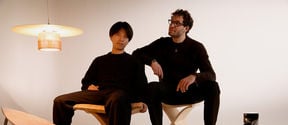“Design can be so many things”
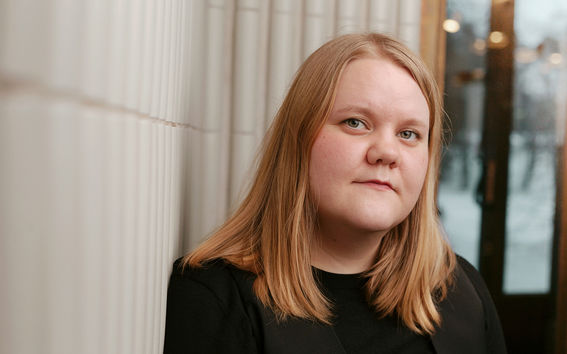
From March to September this year, Finland will participate in the XXII Triennale di Milano for design. The Finnish exhibition is organized and designed by Aalto University teachers and students, from the exhibition design (Monica Romagnoli, Saara Kantele, Ville Kokkonen and Tuomas Siitonen) to curation (Kaisu Savola and Guy Julier) to graphic identity (Adina Renner and Qin Yang).
In the spirit of the Triennale as an international showcase for creativity, Aalto University School of Arts, Design and Architecture will open its virtual doors to the world in coming months, presenting people at the school working in fields related to Paola Antonelli's theme for the Triennale, Broken Nature: Design takes on human survival.
Does the world need any new chairs, any new drinking glasses? The question is intended to provoke, but Kaisu Savola laughs and elegantly brushes it aside. Clearly, it is not glasses or chairs she wishes to talk about.
“People have expectations when they go to a design exhibition,” she says. “They expect to see beautiful things. Or at least the latest technological gadgets. Objects made by somebody important.”
Wearing a stylish monochrome dress, Kaisu Savola could be one of those Important People. Or as she calls them, hero designers, without a trace of malice. By heroes she means the best known Finnish industrial designers: Tapio Wirkkala, Ilmari Tapiovaara, Kaj Franck, Alvar Aalto. “In a sense, they really were heroes,” she says. “They were extremely talented and prolific, and they gave Finland exactly what it needed at the time.”
What it needed at the time, according to Savola, were new things. New products for a country ravaged by war and deprivation. Chairs of course, and glasses, but also new houses and lamps. Simple, yet well-made and beautiful things to provide sense of comfort and well-being. Luckily, Finland’s designers had been trained to create precisely the things the country needed, and from 1945 on, that is what they did.
After losses to the USSR, what Finland also needed was international recognition to match its undiminished sense of national pride – which is where Milan enters the story. In its heyday in the 1950s, the Milan Triennale was the most significant event for design in the world. It followed in the footsteps of the World Expo, inviting contributions by countries, who in turn entrusted the curation process to a famous designer or architect.
“The Triennale is an enormous cultural institution, and Finland has a long history of success there,” says Savola. Finland made a name for itself at the Triennales of the 1950s and 1960s with designers such as Aalto, Wirkkala or Tapiovaara receiving prizes and attention from abroad. One could argue that it was on the success of drinking glasses and chairs that the international reputation of Finnish design was built. Indeed, Milan was the place where much of the international press first came into contact with Nordic design.
Kaisu SavolaI wish that people start seeing design in a new way, not only as something connected to form and aesthetics.
Designing for the next 100 years
According to Savola, what has changed since the 1960s is that Finland – along with most of Europe in fact – has moved away from ‘needing things’ as it did after World War II. “I think that for many years we’ve been using up resources to produce new things, and this has become part of the problem rather than doing good in the world,” she says. When something that has been beneficial starts becoming part of the problem, we have to change the way we see it, she says.
“It requires a shift in how we think about design. Now we associate design with producing new things, with aesthetics and taste, with lifestyle choices. But what if we were to associate design with locating challenges? Whether they are material or immaterial. And with developing methods to respond to those challenges.”
Savola explains that after graduation, most working designers are not employed to create beautiful products. As needs have changed, so has design shifted to include the entire range of human activity, from digital applications to business processes, from user experiences to governmental services.
“If I have one wish for the Triennale, it’s that people start seeing design in a new way, not only as something connected to form and aesthetics. In Finnish, we use the word ‘muotoilu’ – which means form-giving – for design. In English, design can be so many things. Perhaps it is time to start moving in that direction, away from form giving and towards a broader definition of design.”
Grassroots projects on an international stage
As Chief Curator of the Finnish participation this year, Savola has had the opportunity to scout Finnish society for the kind of projects that fit this broader definition. Along with commissioner Guy Julier, Savola selected 12 examples of Finnish ingenuity in the present day: small and large projects focused on a broad range of issues. The kind of initiatives that locate challenges at a local level and search for an appropriate solution with existing resources, or when necessary, create a new solution. In many cases, the ‘experiments’ were planned and carried out by people who would not consider themselves to be designers at all in a traditional sense. Yet Savola insists people should not forget the larger picture.
“The projects in the exhibition do tackle the really big issues: inequality, the destruction of the natural environment and our planet, and even the future of humanity - just on a pragmatic, everyday level.”
Savola selected projects that represent the entire range of human design activity. There are classic investment projects such as Smart Kalasatama, a newly constructed district in Helsinki conceived as a testing grounds for technological innovation and co-creation of city services by residents, city officials and companies. At the other end of the spectrum is a programme by SuoMu - the Finnish Association of Design Learning - which educates children to become aware of their living environment and its designed elements, while encouraging them to explore the design process itself. Finally, there is activism in the form of Suohpanterror, an anonymous Sámi group that creates subversive, thought-provoking images and spreads them in social media.
Kaisu SavolaWhat really matters is how we treat each other and the environment every day, and what we are doing right now -- especially in design.
Redefining design in Finland
Savola insists that part of the radical approach of the exhibition is that it is showing actions and activities that people are really doing at the moment, rather than plans or visions for the future. "Often when we're talking about the big threats we're facing in society, we talk about the future. I think what really matters is how we treat each other, how we treat the environment every day, and what we are doing right now -- especially in design."
The Helsieni project appears to be the last thing you would expect to see at a design exhibition, yet it illustrates Savola's point brilliantly. The object is modest enough: a plain white polyethylene container, like the kind used as packaging for restaurant-sized sour crème portions. But as Savola explains, it is not the surface that counts in this project. Inside the container is a do-it-yourself mushroom growing kit for people to use at home.
“To me, that is one of the most designerly projects in the entire exhibition. The organizers have designed the entire production system, the process of sourcing coffee waste from cafés and restaurants, the farm for growing mushrooms on the coffee grounds, the distribution system for selling the mushrooms to local restaurants, and the grow-at-home kits for consumers to start their own mushroom farms.” Even the recycled dairy containers are designed: a Helsieni sticker adorns them, branding them into a second life as mushroom kits. Design is indeed in the details.
If the Triennale is successful, perhaps we will begin to see that the true miracle of Finnish design is not in the aesthetic genius of a few individuals, but rather in the innovative spirit of the entire country.
For now, Savola returns briefly to drinking glasses and chairs. If someone feels the need to create a new design, she should do so, says Savola. "But she should look at the materials, at how the glass is produced: Does it embody the values of sustainability and equality?" It is a question we can ask ourselves in all of our endeavours.
Finland will present its exhibition Everyday Experiments at the XXII Triennale di Milano from 1 March to 1 September this year, featuring twelve experimental projects people are already doing to make their lives more sustainable and equitable. La Triennale di Milano will take place from 1 March to 1 September 2019 and is curated by Paola Antonelli, Senior Curator of Architecture and Design and Director of Research & Development at The Museum of Modern Art. Broken Nature will reflect on the relationship between humans and environments at all scales—from the microbiome to the cosmos—including social, cultural, and natural ecosystems.
Learn more about all 12 Everyday Experiments: everdayexperiments.aalto.fi
Text: Lucas Millheim
Finland opts for people-first experimentation at Milan Triennale
Celebrating inventiveness, curiosity and a willingness to fail, Finland will present its exhibition Everyday Experiments at the 22nd Milan Triennale from 1 March to 1 September this year.
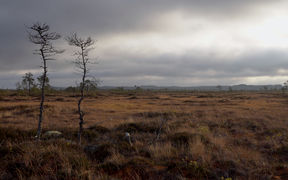
- Published:
- Updated:
Read more news

Robotics needs safe behavior patterns
Robotics and autonomous systems are developing rapidly. Algorithms that withstand disturbances and uncertainties in the system model and environment are critical for development.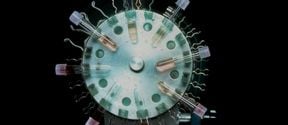
A new way to do controlled experiments in medicine: simulate the control
Generative AI could augment randomized controlled trials.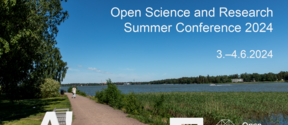
Open Science and Research Summer Conference 2024 will be hosted by Aalto University
Open Science and Research Summer Conference 2024 will be held at Aalto University’s Otaniemi campus and in Zoom 3.–4.6.2024. Please register by May 3.